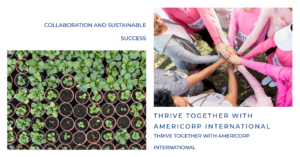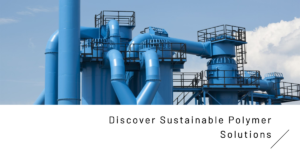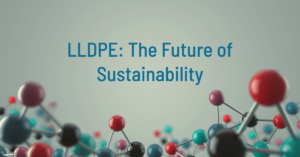Introduction
Plastics, omnipresent in our daily lives, have become integral to various industries worldwide, from packaging to medical devices. Behind this pervasive presence lies the plastic chemical industry, a formidable force shaping economies and generating billions in revenue. This article serves as a compass, delving into the latest updates and forecasts for the plastic chemical industry’s growth in 2024. Whether you’re a stakeholder or a curious mind, join us on this journey of exploration.
Overview of the Plastic Chemical Industry
The plastic chemical industry is a vast landscape encompassing the production of various essential elements such as resins, polymers, and additives. These materials find applications in diverse sectors, from the polyethylene (PE) used in food packaging to polyvinyl chloride (PVC) employed in construction. In 2022, the industry boasted a staggering valuation of USD 761.65 billion, driven by key factors like urbanization, technological advancements, and evolving packaging needs.
Key Products
- Resins: Fundamental building blocks of plastic products.
- Polymers: Long chains of repeating units, contributing to plastic strength and flexibility.
- Additives: Substances enhancing plastic properties or improving processing.
Applications
- Packaging: PE, used for flexible and durable packaging solutions.
- Construction: PVC, a versatile material for pipes, fittings, and more.
- Medical Devices: Various plastics ensuring safety and efficiency in medical applications.
Growth Drivers
- Urbanization and Rising Disposable Incomes: Increased demand for consumer goods and infrastructure fuels plastic consumption.
- Technological Advancements: Continuous innovations in production processes and material science.
- Evolving Packaging Needs: Shift towards convenient, lightweight packaging solutions favors plastic use.
Current State of the Plastic Chemical Industry
Plastics, omnipresent in our daily lives, have become integral to various industries worldwide, from packaging to medical devices. Behind this pervasive presence lies the plastic chemical industry, a formidable force shaping economies and generating billions in revenue.
Market Valuation and Projected Revenue for Specific Plastic Chemicals (2022-2024)
The market valuation and projected revenue for specific plastic chemicals from 2022 to 2024 are as follows:
- Polyethylene Terephthalate (PET):
- Market Valuation: USD 1.71 billion in 2022.
- Projected Revenue: USD 2.58 billion by 2031, growing at a CAGR.
- Polystyrene:
- Market Valuation: USD 21.66 billion in 2021.
- Projected Revenue: USD 21.3 billion in 2024.
- Polyvinyl Chloride (PVC):
- Market Valuation: USD 43.21 billion in 2021.
- Projected Revenue: USD 60.44 billion by 2032.
- Polypropylene:
- Market Valuation: USD 82.08 billion in 2022.
- Projected Revenue: Information on the projected revenue for 2024 is not available in the provided search results.
For a visual comparison, the following table summarizes the market valuation and projected revenue for the specified plastic chemicals:
| Plastic Chemical | Market Valuation (2022) | Projected Revenue |
|---|---|---|
| PET | USD 1.71 billion | USD 2.58 billion |
| Polystyrene | USD 21.66 billion | USD 21.3 billion |
| PVC | USD 43.21 billion | USD 60.44 billion |
| Polypropylene | USD 82.08 billion | Not available |
Despite its strength, the industry faces headwinds, providing a nuanced perspective.
Dominant Market Players
- PE and PP Domination: Polyethylene (PE) and polypropylene (PP) collectively account for over 50% of the market share.
Global Revenue (2023)
- Exceeding USD 980 Billion: A substantial figure, although growth slowed due to supply chain disruptions and inflationary pressures.
Overview of the Plastic Chemical Industry…
Developments in Bioplastics and Recycling
- Advancements: Significant progress in bioplastics and recycling technologies.
- Challenges: Infrastructure and cost barriers hinder widespread adoption.
Future Projections for 2024
As we gaze into the crystal ball of industry trends, analysts cautiously predict a rebound in 2024.
Market Size and Projected Revenue
- Expected Market Size: USD 840 Billion, reflecting a moderate growth rate of around 4%.
- Projected Revenue: Surpassing USD 1 Trillion, signifying a return to pre-pandemic growth trajectories.
Emerging Trends
The chemical industry outlook for 2024…
- Focus on Bioplastics: Anticipated surge in attention towards environmentally friendly alternatives.
- Circular Economy Initiatives: Industry-wide efforts to adopt sustainable and circular practices.
- Regional Expansion Opportunities: Developing economies becoming focal points for industry growth.
Factors Influencing Growth
The industry’s trajectory in 2024 is intricately linked to several key factors that merit exploration.
Economic Recovery
- Global Impact: The performance of the global economy directly influences the demand for plastic products.
Sustainability Concerns
- Public Pressure and Regulations: Growing awareness prompting regulations and consumer choices impacting plastic consumption.
Technological Advancements
- Innovations in Recycling and Bioplastics: Catalysts for unlocking new markets and mitigating environmental concerns.
Challenges and Opportunities
The road ahead for the plastic chemical industry is a terrain marked by challenges and opportunities.
Challenges
- Fluctuations in Oil Prices: Dependence on oil prices poses a challenge to cost stability.
- Stringent Environmental Regulations: Evolving regulations demanding eco-friendly practices.
- Negative Public Perception: Battling against the prevailing negative perception of plastics.
Opportunities
- Investments in Bioplastics: A promising avenue for sustainable and eco-friendly solutions.
- Recycling Infrastructure: Building robust systems to support recycling initiatives.
- Circular Economy Models: Embracing circular economy practices for competitive advantages.
Bioplastics Market Growth
Bioplastics emerge as a pivotal player in the evolution of the plastic chemical industry, providing a sustainable alternative.
Definition and Characteristics
- Bioplastics: Derived from renewable resources, offering a greener alternative to traditional plastics.
- Characteristics: Biodegradability, reduced carbon footprint, and versatility.
Driving Factors
- Environmental Concerns: Rising awareness prompts a shift towards eco-friendly materials.
- Government Initiatives: Support and incentives for the development and use of bioplastics.
- Consumer Demand: Increased preference for sustainable and biodegradable packaging.
Challenges and the Role of Bioplastics
- Challenges: Cost barriers and limited scalability.
- Role in Sustainability: Despite challenges, bioplastics contribute to reducing environmental impact.
Circular Economy in Plastic Industry
The plastic industry is increasingly adopting Circular Economy Initiatives to minimize waste and make the most of resources. These initiatives include:
- Recycling Programs: Implementation of efficient recycling programs to reduce plastic waste.
- Product Life Extension: Designing products for longer life spans and multiple uses.
- Closed-Loop Systems: Creating closed-loop systems for plastic materials, ensuring continuous use and recycling.
The concept of a circular economy offers a paradigm shift in plastic industry practices.
Circular Economy Concept
- Overview: An economic system designed to minimize waste and make the most of resources.
- Applicability to Plastics: Involves recycling, reuse, and reducing the environmental impact of plastic products.
Initiatives Within the Plastic Industry
- Recycling Programs: Implementation of efficient recycling programs to reduce plastic waste.
- Product Life Extension: Designing products for longer life spans and multiple uses.
- Closed-Loop Systems: Creating closed-loop systems for plastic materials, ensuring continuous use and recycling.
Benefits and Challenges
- Benefits: Reduction in environmental impact, resource conservation.
- Challenges: Implementation costs, changes in consumer behavior, and infrastructure development.
Sustainable Plastic Production
Sustainability takes center stage in the production processes of the plastic chemical industry.
Overview of Sustainable Practices
- Reducing Environmental Impact: Strategies to minimize carbon footprint and waste generation.
- Innovations: Technological advancements leading to lighter, stronger, and more versatile plastics.
Impact on Plastics
- Lighter Materials: Enhancing fuel efficiency in transportation.
- Versatility: Adapting to diverse applications, making products more functional.
Environmental Impact of Plastic Chemicals
A critical examination of the environmental consequences sheds light on the industry’s responsibility.
Consequences of Plastic Chemicals
- Pollution: Pervasive pollution of land and water bodies.
- Microplastics: Presence in the food chain, posing health risks.
- Carbon Footprint: Contribution to greenhouse gas emissions during production and disposal.
Industry Efforts and Future Outlook
- Recycling Initiatives: Increasing focus on efficient recycling programs.
- Material Innovation: Developing bio-based and easily recyclable materials.
- Public Awareness: Shaping a sustainable narrative to influence consumer choices.
Regulation of Plastic Industry
Navigating the complex landscape of regulations is imperative for sustainable growth in the plastic industry.
Existing Regulations
- Overview: An examination of current regulations governing plastic production, use, and disposal.
- Global Variances: Differences in regulations across regions.
Evolving Regulatory Landscape
- Sustainability Standards: Integration of sustainability standards in industry regulations.
- Extended Producer Responsibility (EPR): Shifting the onus of disposal onto manufacturers.
- Single-Use Plastic Bans: Global initiatives to reduce the use of single-use plastics.
Balancing Compliance and Growth
- Challenges: Meeting regulatory requirements while ensuring industry growth.
- Long-Term Benefits: Sustainable practices leading to enhanced industry credibility.
Conclusion
In conclusion, the plastic chemical industry, while facing challenges, is on the cusp of moderate growth in 2024. The path forward involves navigating environmental concerns, embracing innovative technologies, and adapting to evolving market dynamics. As the industry continues to shape the future of materials and sustainability, staying informed and proactive becomes paramount for success.
Sources and Further Reading
Delve deeper into the fascinating world of the plastic chemical industry by exploring reputable sources and staying updated on the latest developments.








